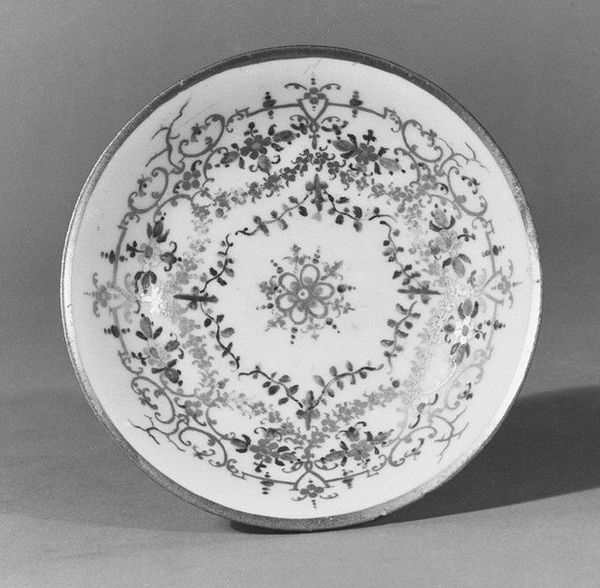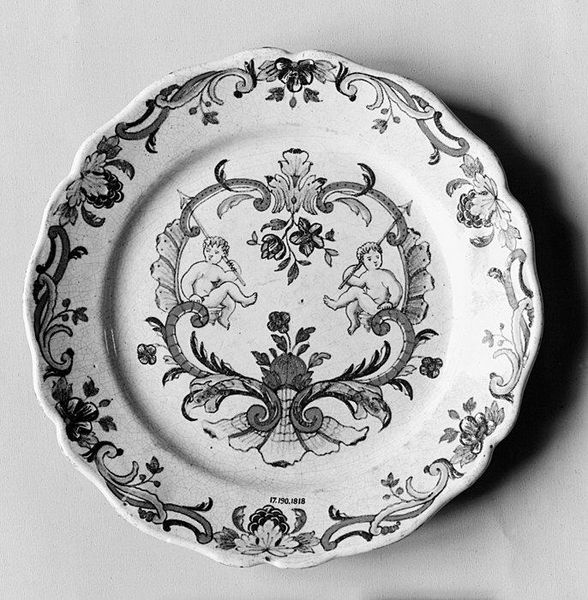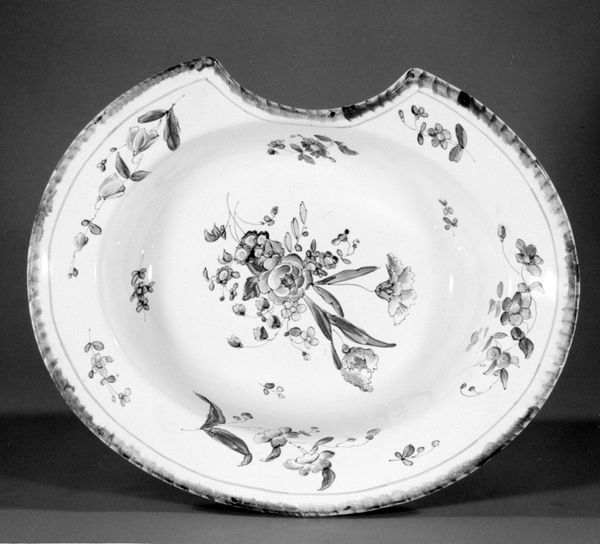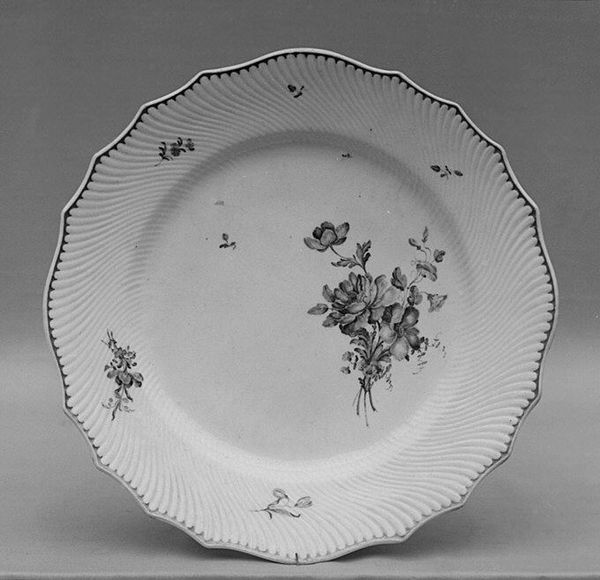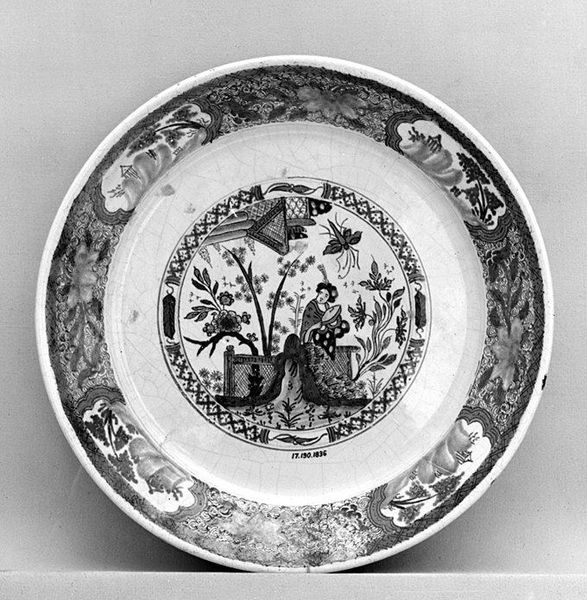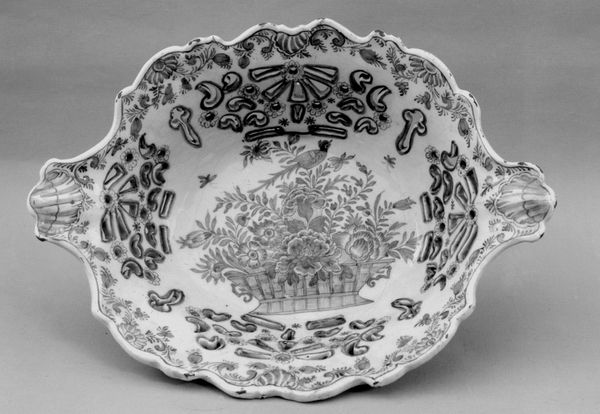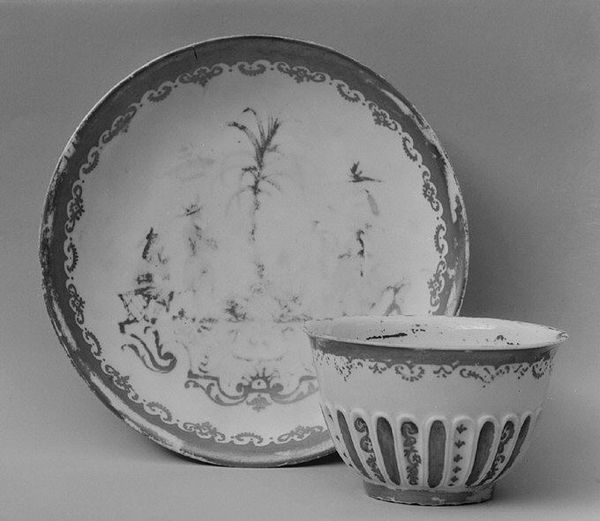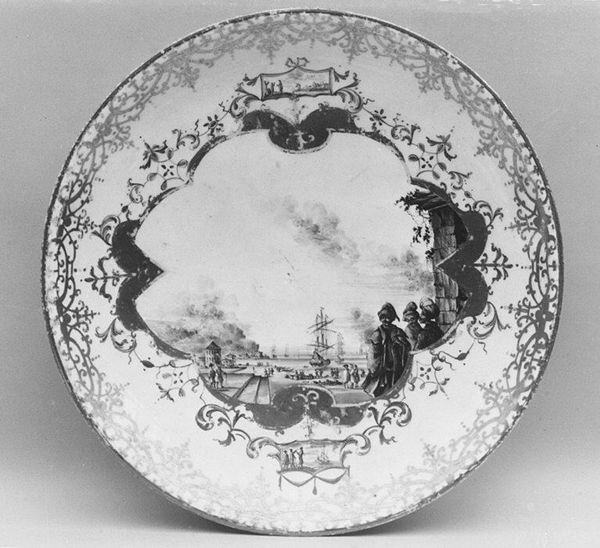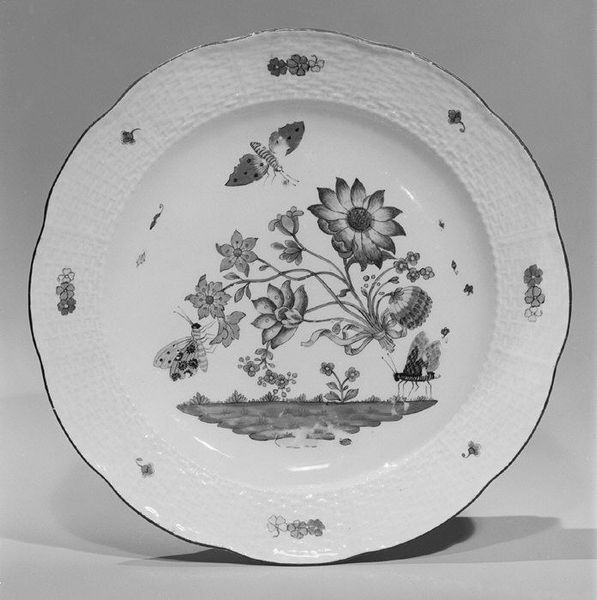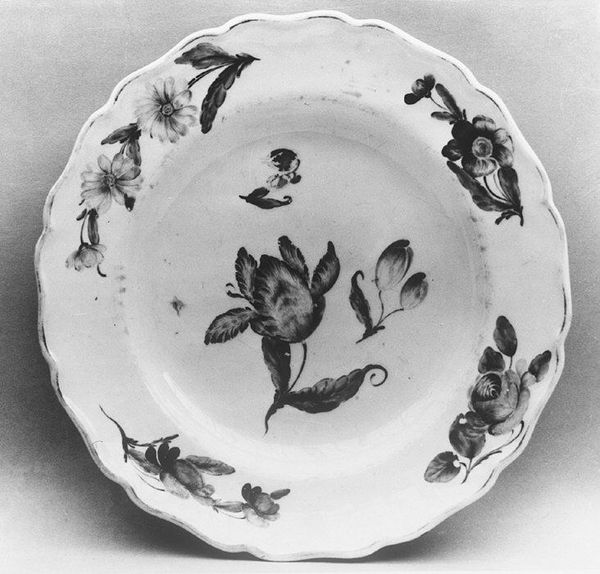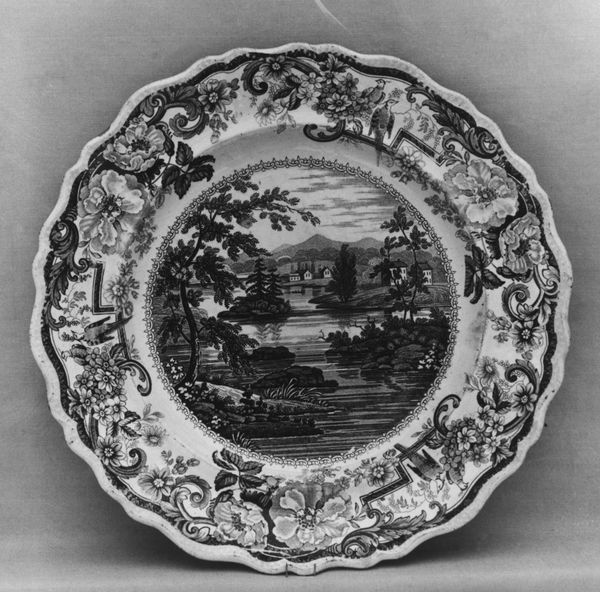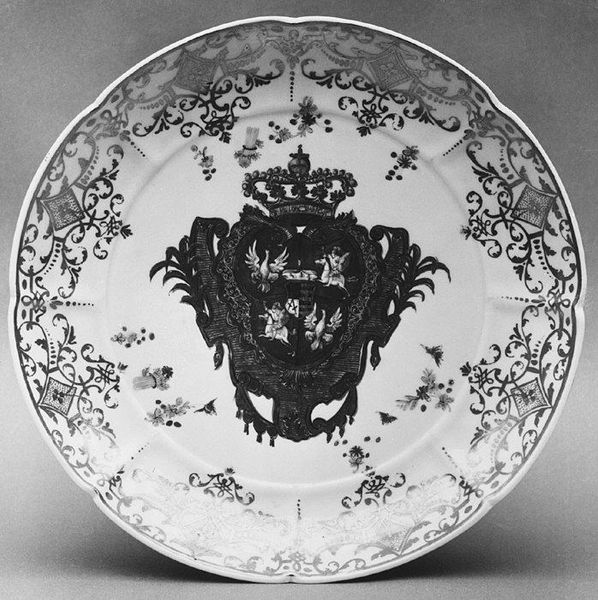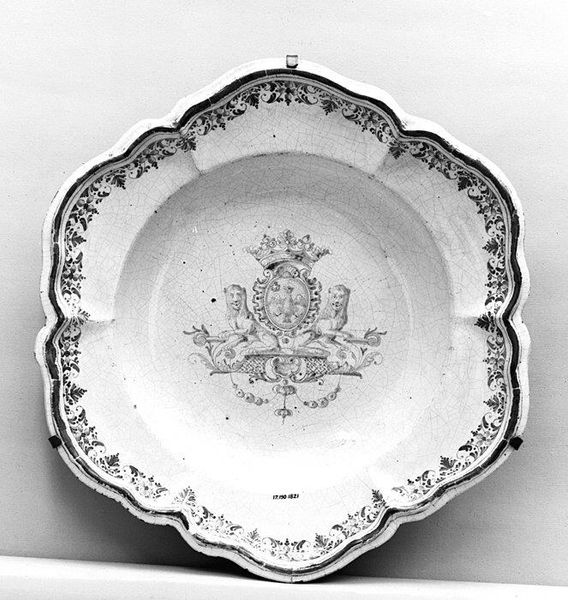
ceramic, porcelain, sculpture
#
decorative element
#
human-figures
#
ceramic
#
flower
#
porcelain
#
stoneware
#
sculpture
#
decorative-art
#
rococo
Dimensions: Diameter: 8 1/2 in. (21.6 cm)
Copyright: Public Domain
Curator: Looking at this exquisite porcelain piece, what strikes you first? Editor: The sheer exuberance! It feels very… celebratory, doesn’t it? Almost overwhelmingly floral, but in a delightful way. Is it Rococo? Curator: Precisely! We are examining a plate created by the Meissen Manufactory, dating approximately from 1720 to 1735. As you observed, the rococo influence is evident. Meissen was pivotal in the European production of porcelain. Their work was often informed by highly ornamental decorative styles with lots of human-figures and flowers like you said. Editor: And what about the clay itself? It’s striking that a utilitarian object – a plate, after all – could be elevated to such a status symbol. What can it tell us about its making? Curator: Porcelain manufacture at Meissen relied heavily on kaolin deposits found near the factory and wood-firing kilns for high-temperature firing. Skilled artisans were responsible for the preparation, moulding, painting and glazing which influenced not only form but ornamentation in a system driven by industrialised artistic techniques and divisions of labour. These decorations, with little figures and profuse blossoms, speak directly to luxury and wealth, becoming instruments of diplomacy. Editor: Absolutely. Porcelain in the 18th century was as much about political statement as domestic use. Displaying objects like these advertised wealth and connections to royal houses and empires. What are those miniature scenes along the border meant to suggest? Curator: Those little vignettes are chinoiseries – stylistic interpretations of Chinese scenes. The European fascination with the "Orient" was at its peak, shaping aristocratic taste. So, through this single plate, we see technology transfer, labour structures, artistic production systems and cultural idealization converging. Editor: It really is a potent mix. Considering its presence today at the Metropolitan Museum of Art, the piece acts as a witness to the evolving story of consumption. Curator: Indeed. It allows us to see production, art, society and aesthetics interlinked through something as "simple" as a plate.
Comments
No comments
Be the first to comment and join the conversation on the ultimate creative platform.
